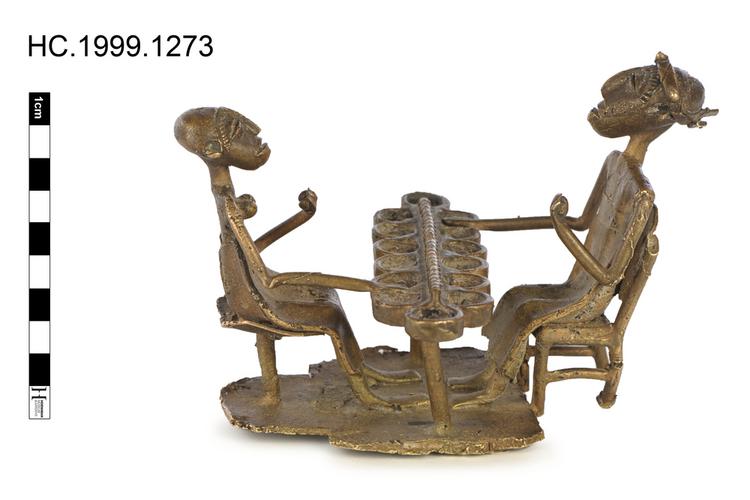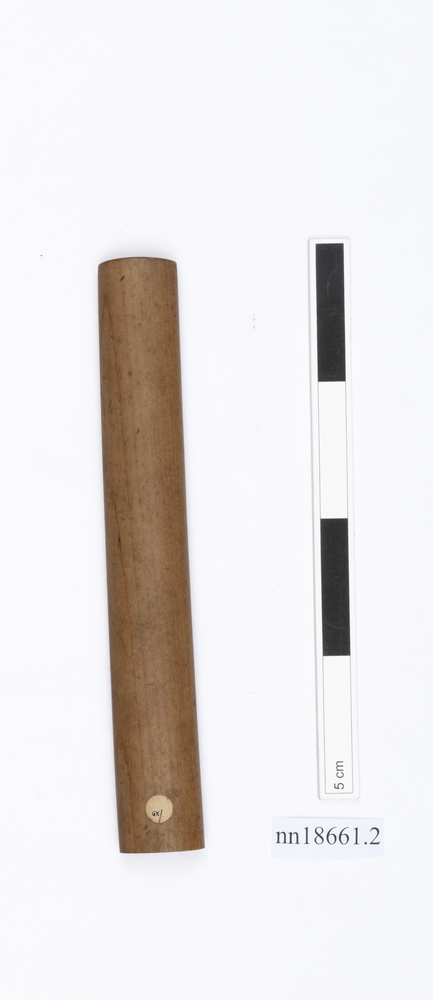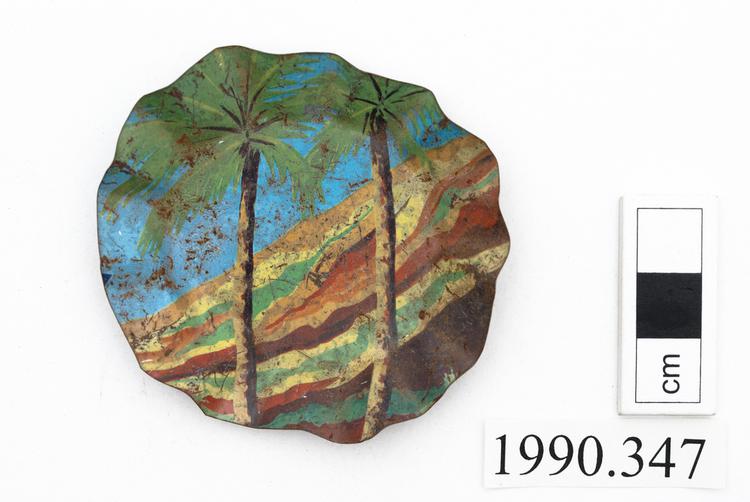



Two brass figures playing mancula (board game).
Hundreds of thousands of brass 'gold' weights have survived and this is thought to be due to the fact that there were so many in use. A full set of weights consisted of about 40 different sizes. Every trader needed to own a set of weights but no set was identical. Each owner chose his own motifs and a chief's set would contain more of the heavier weights and also be of the highest workmanship. There is an Ashanti proverb which says 'The weights of a chief are not those of the common man.' Although it has its origin in the use of gold weights, today it means that the chief carries more responsibilities than the commoner. The subjects and motifs of the brass weights often reflect well proverbs or stories. One of the more common is that of the 'sankofa' bird. This long necked bird, with its head turned behind and resting on its back, reminds people that much can be learned from past events. This is also one of the well known Adinkra symbols used to decorate many Ashanti items. Another common motif for these weights is the headless fish, a warning of the problems caused in society by favouring one person over another (see connected stories). The British colonial administration outlawed the use of gold dust in trade in 1894 and the use of these brass weights in 1896.
Mancala is still very widely played across Africa, with many different names and variations. On an outreach visit to Deptford Lounge, two women from the Delta region of Nigeria said that people from their community dig holes in the ground and use pebbles as makeshift balls if they cannot afford to buy a board.
This statuette is a brass weight and would have been used to balance scales, to weigh gold dust to pay for goods. Weights could be in the form of everyday objects, people, animals, or just shapes.






